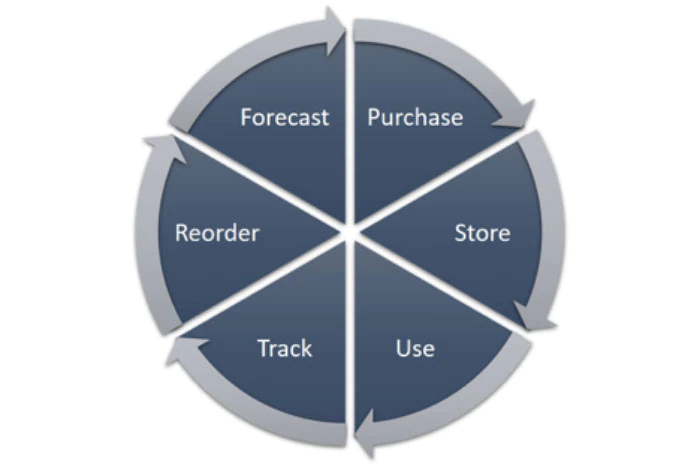For e-commerce brands and retailers, inventory planning can be complicated as they operate across multiple online sales channels along with various physical stores. Handling a large database of customers and expanding the business along with sudden market shifts might be challenging.Thus, forming a detailed inventory plan is essential for reducing out of stock and inventory wastage instances success and future security.
Inventory stock is the stock of products that serve the current or impending need. Manufacturing companies store raw materials, finished products, and work-in-progress goods as inventory stock in warehouses. In addition, retail stores maintain an inventory of finished or processed items for selling them to customers.
Every business, big or small, holds some form of inventory. It is true even for software development companies, hotels, and repair & operations industries for supporting the business. Inventory is one of the most important aspects of a retail company. Organizations maintain inventory for different purposes, so they can operate independently without interruption and maintain safety stock for fluctuating consumer demand or delayed deliveries. Adequately stocked inventory allows companies to schedule outputs and meet consumer demands efficiently. Businesses can obtain bulk orders for a discounted price with proper inventory planning systems.
Process Flow in Inventories
The processes involved in the inventory lifecycle consider manufacturing, maintenance and service, and retail organizations in the same manner. The order of steps is as follows:
- Purchase – Businesses purchase inventory depending on demand planning, or if it is a startup, the inventory is maintained on the estimate of what is required.
- Store – Businesses should maintain stocks in a clean warehouse in a secure area. Businesses need to pay bills for the warehouse -heating, lighting and refrigerating.
- Use – Companies use stock items, such as raw materials, sales items, and repair components, from inventory as and when required.
- Tracking stock regularly is necessary to maintain the manufacturing schedule, cash flow, and satisfied customers. Businesses should deploy efficient inventory planning systems to have real-time insights into stock levels so that they know when to order for replenishment.
- Reorder – Businesses can reorder or replenish inventory manually or through automated systems. You can use strategy models or mathematical or management models to estimate the optimal level of stock that you should maintain, the frequency and the quantity of reordering.
- Forecast – Established organizations and enterprises that have previously gone through a few inventory cycles can forecast the inventory requirements and approximate timings. Forecasting assists in maintaining an optimal stock all year round.
Inventory Planning: Overview
Inventory planning aids organizations in purchasing the correct amount of stock and deciding how frequently stock should be reordered. Inventory planning can reduce the expense of maintaining additional stock while ensuring that there are enough items in the warehouse to meet consumer demand in time. It is an essential aspect of supply chain management that ensures that raw materials and finished products move from the factory to customers effectively.
How to Plan Inventory Effectively?
Inventory planning is directly associated with the revenue and profits of a business. Efficient planning helps to avoid stockouts so that the production flow is maintained. It also ensures that businesses do not spend extra money on last-minute purchases and avail discounts on bulk purchases. The right combination of process, people, and inventory planning software for retail can result in accurate inventory planning.
- Inventory planning software – Businesses can use inventory planning systems that ensure that stocks are maintained to the appropriate level while avoiding overstocking. A robust software provides information on past data and real-time insight into present stock levels. A right software thus helps in scaling your business.
- Inventory Planning Processes – Inventory policies assist you in supervising planning activities and in maintenance processes. It is essential to communicate the inventory planning policies and processes throughout your organization to ensure a smooth workflow. Inventory planning policies may also include how businesses use inventory planning software for retail.
- Inventory Planning Roles and Responsibilities – It is essential to analyze demand patterns and forecast demand. Inventory planners work with purchasing and contract managers, supply chain financial analysts, supplier managers, quality and production control, and stakeholders.
Despite the benefits of inventory planning, many organizations do not indulge in the practice and ultimately suffer losses due to out-of-stock items and low-profit margins.
Goals of Inventory Planning
The primary motive of companies is to satisfy customer demand. Customers may shift to your competitors if they do not get the right product at the right time. This, in turn, affects the business turnover as acquiring new customers is more challenging than retaining existing customers.
- Cost Control – Inventory planning aims to minimize the expenses of storing products. That is reducing the holding costs such as purchase costs, taxes, insurance, labor, stock decay, etc.
- Forecasting – It is the process of predicting future sales and, therefore, future inventory needs to maintain an optimum stock level.
- Sufficient Storage – Efficient storage facilities help you to maximize profits. By storing high-demand items so that the lead time is reduced, you can achieve a productive layout, maximizing profits.
Factors to Consider While Planning Inventory
While you are monitoring your inventory processes, you need to take into consideration a number of aspects. External as well as internal factors influence inventory management in various ways and you should consider some of these factors.
- Product Volume and Type – Historical data can be used to understand the demand for a particular product. Moreover, inventory planning systems should show the historical trend. You can also use Google Analytics to understand demand patterns. Depending on this research, you can maintain stock for meeting high demand.
The kinds of products should also be considered while managing inventory. Some products may have an expiry date and have a shorter shelf life. Inventory should be stocked accordingly.
- Safety Stock – Safety stock is the additional quantity of an item that is stored in the warehouse for preventing scenarios of out-of-stock products. It becomes the savior against demand fluctuations.
- Fill Rate – It is the amount of customer orders a business can fulfill without running out of stock. It is used to understand the efficiency of your business to fulfill orders. You should aim for a high fill rate and stock your inventory accordingly.
- External Factors Influencing Inventory – Several external factors may also affect inventory management. Economic downturns may be one such factor and you should assess the economy to avoid cases of understocking or overstocking. Local competition and real estate markets are other factors affecting inventory. Other factors that affect inventory are promotions and marketing, the income of the consumers, seasonal demands, competitor activities, trends and customer preferences.
- Efficient Warehouse and Lead Time – The warehouse should be well-organized for picking items and fulfilling orders in time. It should be large to accommodate stock at times of sales offered by suppliers. The warehouse should be strategically located to minimize the shipping costs and allow you to receive goods before your competitors. You can also hire third-party logistics companies to perform this function.Lead time is the time from the moment an item is ordered to the time it takes for the product to arrive. Lead time varies with different products and it also depends on the manufacturing processes involved. Any changes in this factor can lead to changes in inventory management.
- Supplier Scoring – Improve the relationship between supplier and inventory management system. Inventory management hugely depends on suppliers and reliable suppliers should be deployed by successful businesses. An irresponsible supplier can negatively impact the inventory and businesses should ensure that they contact a reliable supplier for avoiding stock outs or delayed deliveries.
- Automated Processes – An inventory planning software for retail helps in reducing mistakes in repetitive tasks and thus employees can focus on improving planning and processes. It is essential to manage the inventory efficiently and supervise the processes and track every individual item to make sure they are stocked in the right amounts.
- Financial Factors – Borrowing money for stocking inventory can affect inventory management significantly and finances may be wavering due to the varying interest rates. The expense behind tax for stocking inventory can also influence inventory management. Other factors related to finance are the costs related to warehouse operations and transportation costs which might require you to change your inventory management processes.
Inventory planning can proliferate the retail business’s growth if done accurately, and it can bring huge profits and reduce business expenses. So, you have to maintain an optimum inventory level with safety stock to meet consumer demand efficiently and avoid losses. A robust inventory planning system can provide helpful insights into historical sales data and analyze it to forecast demand from time to time.



